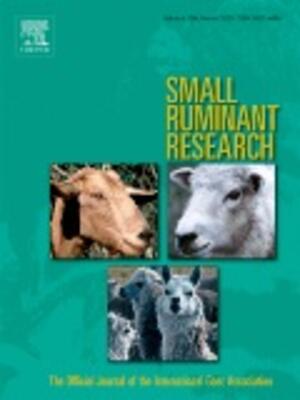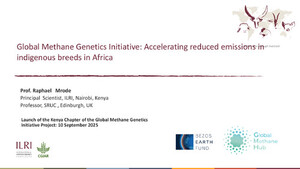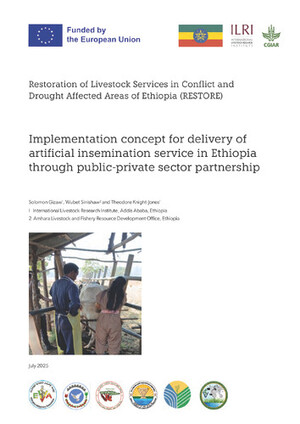
Production objectives and trait preferences of village poultry producers of Ethiopia: implications for designing breeding schemes utilizing indigenous chicken genetic resources
Abstract
To generate information essential for the implementation of breeding schemes suitable for village poultry producers in Ethiopia, a survey was conducted aimed at defining the socioeconomic characteristics of the production environments in different geographic regions, understanding the important functions of chickens, identifying farmers’ choice of chicken breeds and the underlying factors that determine the choice of genetic stock used. The survey included both questionnaire survey and a participatory group discussion. A total of 225 households (45 households from each of five Woredas) were interviewed. The questionnaire was designed to collect data covering general information on village poultry production such as socio-management characteristics, production objectives, population structure, breed choice and trait preferences, market preferences of specific traits, and farmers’ selection practices. The participatory farmers’ discussions were designed to involve stakeholders in defining the breeding objective “traits” and deriving their relative importance in the production environment based on the different functions of chickens and “traits” identified in the interviews. The results showed that production of eggs for consumption is the principal function of chickens in most regions followed by the use as source of income and meat for home consumption. The production system in all geographic regions studied revealed similar features generally characterized by extensive scavenging management, absence of immunization programs, increased risk of exposure of birds to disease and predators, and reproduction entirely based on uncontrolled natural mating and hatching of eggs using broody hens. Farmers’ ratings of indigenous chickens with respect to modern breeds showed the highest significance of the adaptive traits in general, and the superior merits of indigenous chickens to high yielding exotic breeds in particular. Adaptation to the production environment was the most important attribute of chickens in all the study areas. The high significance attributed to reproduction traits indicates the need for maintaining broody behavior and high level of hatchability while breeding for improved productivity of indigenous chickens for village conditions. The market price of chickens is primarily dictated by weight, but farmers rated growth (males) and number of eggs followed by growth (females) as the production traits they would like the most to be improved. Therefore, the ultimate breeding goal should be to develop a dual-purpose breed based on indigenous chicken genetic resources with any of the comb types other than single for all the regions studied having the most preferred white body plumage for farmers in the Amhara region and red body plumage for those in Oromia, Benshangul-Gumuz, and Southern regions.
Citation
Dana, N.; Waaij, L.H. van der; Dessie, T. and Arendonk, J.A.M. van. 2010. Production objectives and trait preferences of village poultry producers of Ethiopia: implications for designing breeding schemes utilizing indigenous chicken genetic resources. Tropical Animal Health and Production 42(7):1519-1529.










